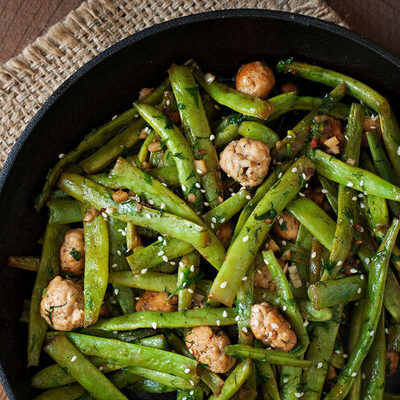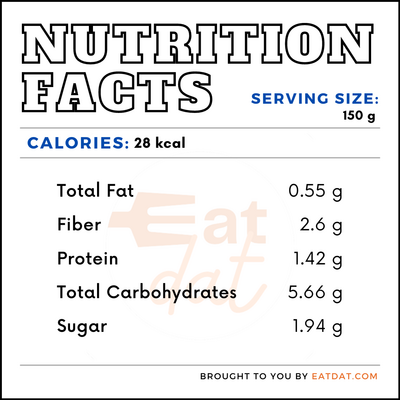
Green Beans
also known as French beans, String beans, Snap beans, Haricot vert, Kenyan beans, Bobby beans, Baguio beans
What are Green Beans?
Green beans are a long, thin vegetable that grows on plants or vines.
The beans may be bought fresh, canned, or frozen and can be cooked in a variety of ways, including eating raw, steaming, boiling, stir-frying, and baking. There are dozens of different varieties of green beans. These beans are also known as French beans, string beans, snap beans, snaps, haricot vert, Kenyan beans, Bobby beans, and Baguio beans.
Some of the most common varieties are:
- French beans
- Long beams
- Purple string beans
- Flat beans
- Wax beans
Origin of green beans
French beans are of South American origin. There is evidence that these beans have been cultivated in Mexico and Peru for thousands of years. These beans were domesticated and spread throughout the continent by migrating native tribes. They are an integral part of Native American agriculture, and were usually planted along with corn and squash, leading the three to earn the name “the three sisters”. Spanish explorers, especially Christopher Columbus, are credited with bringing the beans to Europe, from where they spread throughout the world. Today, it is one of the most widely available vegetables in the world.
Nutrition
A serving of French beans (about 150 grams) contains:

The vegetable is rich in complex carbohydrates and fiber. It also contains good amounts of micronutrients such as calcium, iron, magnesium, phosphorus, potassium, vitamins A and K, and B vitamins (folate, thiamin, riboflavin). French beans also contain phenolic compounds that are beneficial to health, through gut microbes. They are known to have benefits for pregnant women by aiding the growth of the fetus. The vegetable may also help in preventing cancer due to its levels of chlorophyll. Regular consumption of this food may help improve heart health, strengthen bones, manage depression, and reduce anemia.
Commercial production
Essentially, there are two types of beans: bush beans and pole beans. Bush beans require less maintenance and are easier to cultivate, while pole beans have the advantage of providing more yield and are more resistant to diseases. French beans grow best in a well-drained soil that is slightly acidic. They don’t specifically require a lot of fertilizers, because they are able to produce nitrogen and fix it to the soil, ensuring growth.
These beans are one of the most popular vegetables worldwide. The USA is the largest producer of this vegetable, followed by France, Morocco, Mexico, the Philippines, Turkey, Poland, Argentina, Japan, and Iraq. The largest consumers are China, Indonesia, Turkey, India, and Thailand. French beans may be kept fresh in an airtight container in the refrigerator for up to a week. They may be frozen, canned, or pickled to ensure longer shelf life.
Green beans recipes
These beans are a nutritious vegetable that can be adapted to different cuisines. Here are a few recipes:
- Green Bean Casserole
- Buttery Garlic French Beans
- Beans Poriyal
- Lemony Green Beans
- Irish Stew
- Thai Stir Fried Green Beans
- French Beans with Minced Pork
- French Bean Salad
- Green Bean Soup
- French Beans Masala Rice
- Green Beans and Mushroom Bread Pudding
FDA regulations
The FDA describes all fresh vegetables, including green beans, as raw agricultural commodities and strictly regulates all aspects of their growing, harvesting, packing, and storage. These beans fall under the 20 most frequently consumed raw vegetables. Canned French beans also fall under the purview of the FDA and are defined as foods prepared from succulent pods of fresh green bean or wax bean plants.
References
Green Beans, College of Agriculture & Life Sciences, University of Arizona, https://cals.arizona.edu/fps/sites/cals.arizona.edu.fps/files/cotw/Green_Beans.pdf
Green Bean Production in ER, Afghan Agriculture, UC Davis International Programs, https://afghanag.ucdavis.edu/educational-materials/files/horticulture/exthortafggreenbeanproductioneastregideappt.pdf
Janice Stillman, Judson D. Hale Sr., Jack Burnett, Heidi Stonehill, Sarah Perreault, Catherine Boeckmann; Growing Green Beans, The Old Farmer’s Almanac, https://www.almanac.com/plant/beans
Myers, James R et al. “Improving the Health Benefits of Snap Bean: Genome-Wide Association Studies of Total Phenolic Content.” Nutrients vol. 11,10 2509. 18 Oct. 2019, doi:10.3390/nu11102509, https://www.ncbi.nlm.nih.gov/pmc/articles/PMC6835575/
Slavin, Joanne L, and Beate Lloyd. “Health benefits of fruits and vegetables.” Advances in nutrition (Bethesda, Md.) vol. 3,4 506-16. 1 Jul. 2012, doi:10.3945/an.112.002154, https://www.ncbi.nlm.nih.gov/pmc/articles/PMC3649719/
